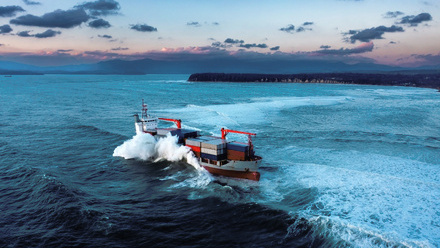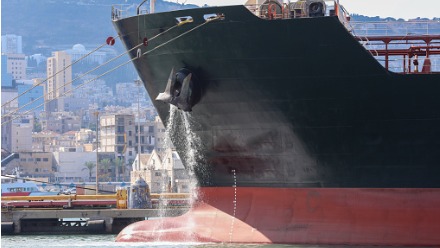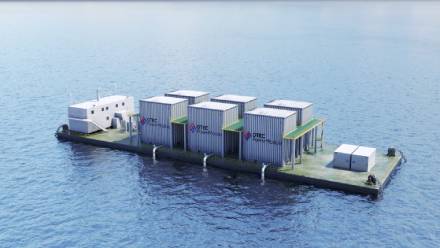New wing sail aims to save 30% of shipping fuel per year
Global shipping CO2 emissions account for approximately 3% of the world’s total and the race is on to dramatically reduce them. One company tackling the problem is Smart Green Shipping (SGS), based in Dumfries, Scotland. Given over £5m in funding, founder Di Gilpin is confident that their FastRig is a potential solution.
Hunterston, a town on the east coast of Scotland, is the ideal test site for a sail. Situated on the Firth of Clyde, it’s open to the elements. And it is here that SGS is putting its new technology through its paces. FastRig is a retractable, rigid wing sail, designed to be easily retrofitted to existing commercial vessels, bulkers or tankers.
“Our system provides propulsive thrust from wind with the purpose of reducing fuel consumption, greenhouse gas emissions and operating costs on commercial vessels. It is designed and manufactured in the UK from 100% recyclable materials,” says Gilpin. SGS claims it can save around 30% fuel per year, depending on the route, speed and ship size.
It's a two-pronged strategy. In 2019, the SGS team won an award from the European Space Agency to develop digital tools in a project it calls TradeWind, to predict and further optimise the use of wind for ships. “We’ve got an eight-thousand-year history of using wind and we’re harnessing it in a 21st century way,” Gilpin says. The idea is the testing, coupled with the software, will produce verifiable data, a project SGS is working on in collaboration with the University of Southampton.
The next step will be moving the rig down to Barrow, in northern England and, working with Yorkshire-based renewable power generation company Drax, start sea trials in September/October. “Among other things, Drax is biomass carrier. It is moving biomass products from the US to the UK. This aspect of its operations blows a hole in its carbon neutral agenda, so it was keen to partner with us to see if we can help reduce its shipping emissions,” states Gilpin.
Money, money, money
In terms of funding, SGS has received money from the Scottish and UK governments and private backers. The business model, at least initially, is proving the technology saves companies money on fuel and taking a cut of that saving.
“The fact is that wind is easier to predict [than] fuel prices. But we are focused now on testing and collecting data and showing the owners that the technology is viable,” she enthuses.
A key advantage of the FastRig technology, Gilpin claims, is that it can be easily fitted and removed, a must for the industry. “Ship owners are in the business of moving cargoes around. They have enough to do and think about. They want to know if the technology is effective, if it is simple, if it will save them money and if it will help their emissions.”
Gilpin’s company isn’t the only one looking to be the technical solution of choice in the UK and worldwide, but she is confident there is enough business to go round. The biggest challenge, at this point, is convincing ship owners.
“If you own [a] ship, you can do what you want,” Gilpin concludes. “But most ships are owned by big banks. They don’t want new bit of kit put on their ship without knowing what it offers and how it works, and how much money it might save them in terms of fuel. So, it’s a technical challenge, but also about giving [them] market confidence.”
Image: Smart Green Shipping’s FastRig being tested; credit: Smart Green Shipping.
Tell us what you think about this article by joining the discussion on IMarEST Connect.






